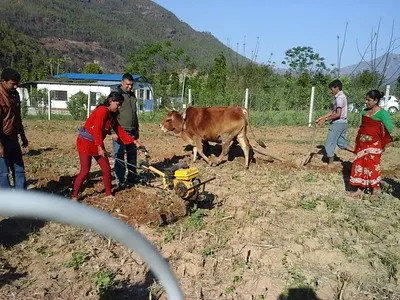Navigating Nepal's Battle with Natural Disasters: Floods and Droughts
 |
| Dry spell at transplanting and tillering time; and Inundation at the crop harvesting time. |
Introduction:
Nepal, nestled in the lap of the Himalayas, faces an array of natural and human-induced disasters with increasing frequency and intensity. As one of the world's highest-risk countries for various types of disasters, Nepal's geographic and societal fabric constantly grapples with the looming threat of calamities. While volcanic eruptions are not a concern, the nation experiences a wide range of disasters, including floods, landslides, fires, epidemics, avalanches, and more. This article will delve into two major natural hazards: floods and droughts, exploring their impact and historical occurrences in Nepal.
Floods: A Frequent and Devastating Hazard
Floods are a recurrent and highly destructive natural hazard in Nepal, particularly during the monsoon season. With over 6,000 rivers and rivulets coursing through its terrain, many originating from snow-fed Himalayan ranges, the nation's topography amplifies the intensity of floods. Notable snow-fed rivers like the Koshi, Narayani, Karnali, and Mahakali surge during monsoon, causing substantial damage to villages, farmlands, and inhabitants within their basins. The steep, rugged terrain and high-angle slopes, coupled with complex geology, make Nepal susceptible to flooding and landslides during the monsoon. Historical data highlights significant flood events, including the 1978 Tinao basin flood, the 1980 Koshi River flood, and the devastating 1993 Kulekhani cloud burst, which claimed 1,336 lives. Nepal ranks 30th globally in terms of flood hazard (UNDP/BCPR, 2004). Notable recent flood disasters occurred in 2008, 2014, 2017, 2021, and 2022, leaving a trail of destruction in their wake.
Some of the most devastating floods in Nepal over the past 23 years include:
- - 2001: Sarlahi flood (198 lives lost, 105 injured)
- - 2005: Kanchanpur flood due to monsoon rains
- - 2008: Koshi River flood in August and Western Nepal floods in September
- - 2014: Severe flooding affecting 17 districts, causing extensive damage to infrastructure and crops
- - 2017: 35 districts affected, with 4 lakh people displaced due to heavy seasonal rain-triggered floods, with Saptari hit the hardest
- - 2021: Significant flood damage in Melamchi Bazaar
- - 2021 and 2022: Floods and inundation during the paddy harvesting season causing crop damage in western Nepal
- - 2022: Darchula flood following heavy rainfall in September
Drought: A Pervasive Challenge
While floods are a pressing concern, drought is another frequently occurring hazard, particularly in certain regions of Nepal. Parts of the Terai, mid-lands, and Trans-Himalayan belts are susceptible to drought, with the lack of irrigation facilities exacerbating its effects. Irregular monsoonic rainfall in the mountainous region of Nepal is a significant factor contributing to drought. Notably damaging droughts occurred in 1972, 1979, and 1994, affecting crops, livestock, and people. Prolonged dry spells and drought-like situations occur yearly, primarily due to irregular and insufficient monsoon rainfall.
Some recent instances of drought and dry spells include:
- - 2008/2009: Severe drought, resulting in a 15% reduction in national production of major food crops such as barley and wheat.
- - 2015: A severe summer drought causing food insecurity in western Nepal, impacting over 80% of the population.
- - 2021: A dry spell contributing to widespread wildfires.
- - 2022/23: Prolonged dry spell in western Nepal during the mid-monsoon season.
Conclusion:
Nepal's struggle with natural disasters, particularly floods and droughts, underscores the urgency of disaster preparedness and resilience-building in the country. The devastating consequences of these events, as evident in the loss of lives and property, highlight the need for proactive measures and international cooperation to address these challenges. Nepal's unique geographical and climatic features demand adaptive solutions that can mitigate the impact of such disasters and support the affected communities in their path to recovery.






